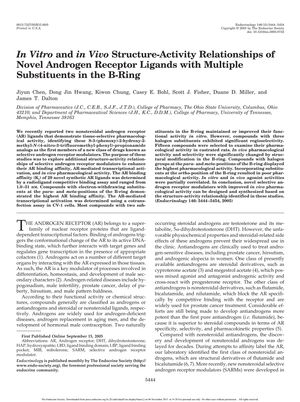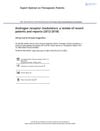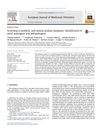In Vitro and In Vivo Structure-Activity Relationships of Novel Androgen Receptor Ligands with Multiple Substituents in the B-Ring
September 2005
in “
Endocrinology
”

TLDR Certain changes to the B-ring of androgen receptor ligands can increase their effectiveness for potential treatments of muscle and bone conditions.
The document from December 2005 details a study on the development of novel selective androgen receptor modulators (SARMs) by synthesizing 29 nonsteroidal AR ligands and analyzing their structure-activity relationships, particularly the impact of substituents in the B-ring on AR binding affinity and pharmacological activity. The study found that AR binding affinity was enhanced with electron-withdrawing substituents in the B-ring, with the most potent compounds having Ki values as low as 1.0 nM. In vitro assays using CV-1 cells showed that compounds with two substituents in the B-ring maintained or improved transcriptional activation. In vivo testing on castrated rats with 15 compounds demonstrated that structural modifications in the B-ring significantly influenced pharmacological activity and selectivity, with halogen groups at specific positions increasing activity. The study concluded that the design of novel SARMs with improved pharmacological activity could be guided by these findings, potentially benefiting treatments for muscle-wasting diseases, osteoporosis, and other androgen-related conditions. However, the exact number of rats used in the in vivo studies was not specified in the summary.

